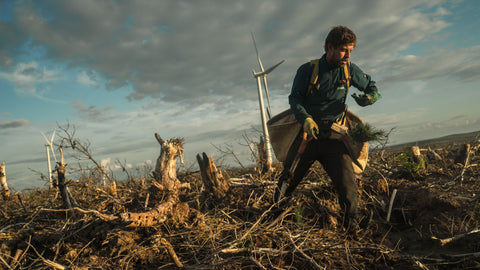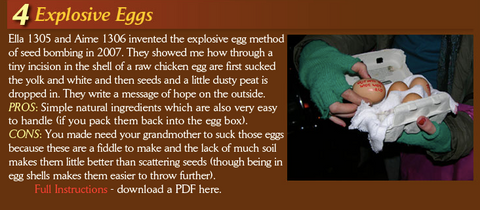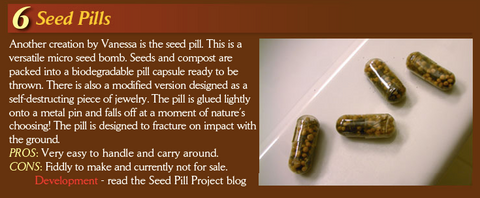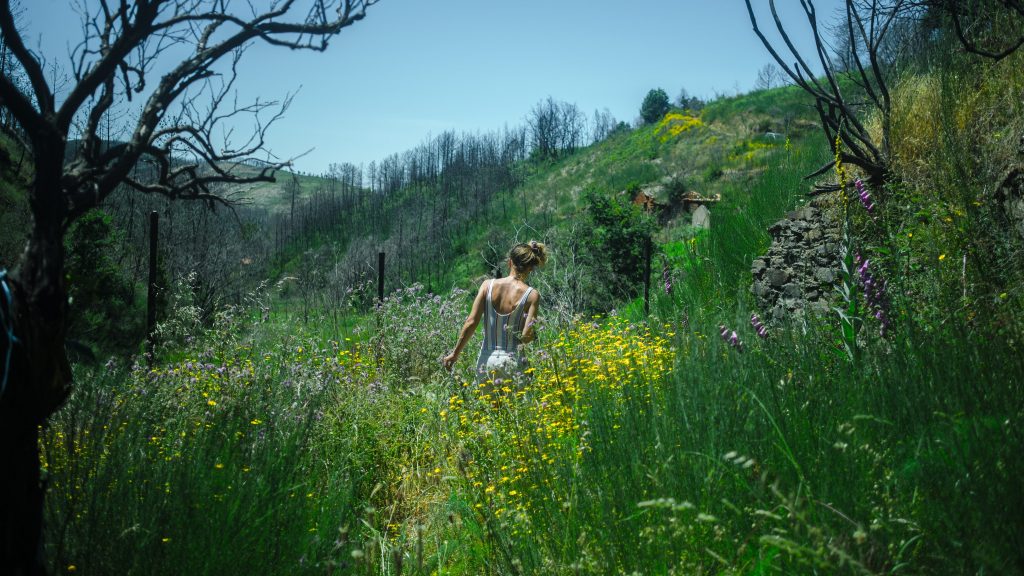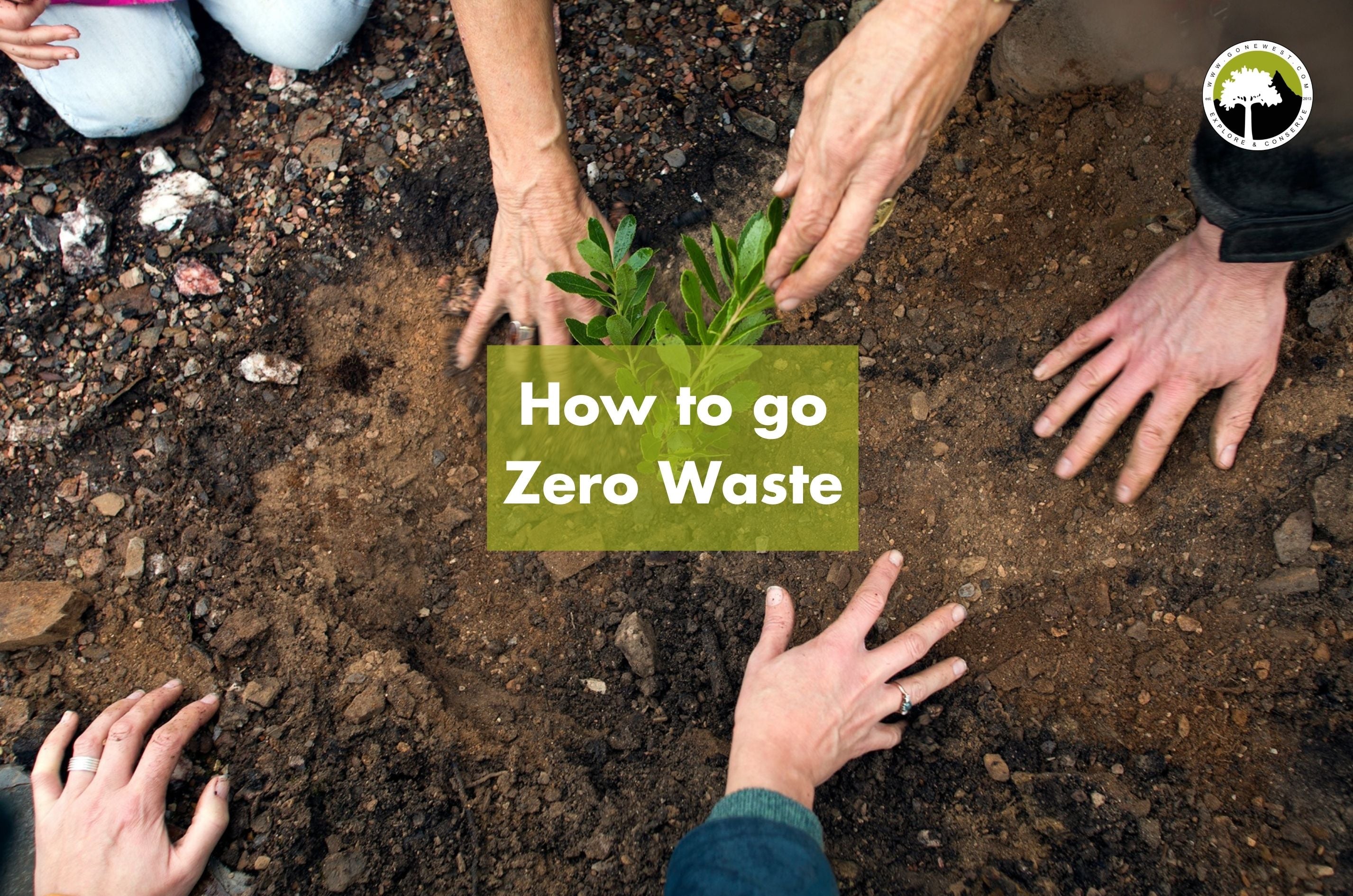Let’s be frank, seed bombing is the only bombing that our planet would want. It is a practice which is used in repopulation ventures, and it helps out the local environment.
Seed bombing has many benefits such as;
- Increasing green space
- Improving food security
- Increased pollen for bees
- Help combat habitat loss
- Easy to distribute seeds
- They can make ugly forgotten land bloom again
- Restore plant and wildlife populations
- Nourish and feed the soil
- Bring communities together
What is Seed Bombing
A Seed Bomb, also known as seed balls or the guerilla grenade, are little balls made up of a combination of compost, clay and seeds. The act of using the ball is called Seed bombing, which is the practice of introducing vegetation to land by throwing or dropping the seed bombs. The structure of the bomb enables the seeds to be launched over walls or distances, as the compost and clay act as a barrier to protect and nourish them, so they don’t need to be planted.
How They Work?
It all depends on the climate and type of seeds you put into the mix. Usually after about three weeks the first seedlings will start to make their way through the seed bomb and root into the ground below. The seedlings will then grow into mature plants and face whatever weather conditions are in store for them. As they grow, more seeds will germinate, and the seed bomb begins to dissolve over time.
Seed Bombs, like most plants, are resilient and the time they can take to grow fully can all depend on the weather and what seeds you have put into the seed bomb, so it can range from days, weeks or months to see them fully form. Again that being said, the seeds would remain dormant until their environmental needs are met, if you neglect factors such as water, correct temperature and a good position to grow in. The seed bomb will fail to form properly if these are not met, if not at all.
The best places where to seed bomb are usually in neglected areas, barren land, gravel areas or empty garden land.
Seed bombing> Regular planting
Seed Bombing is effectively a little ball of life that can become a little revolution of its own, which can help change landscapes. The beauty of seed bombing is that you can either plant various of the same seeds, or you can plant numerous seeds which are compatible with another. This is also known as ‘companion planting’. You can pair plants that require the same conditions to grow and will grow well together spreading over a large area. This can be very time consuming if you are planting in the ground or one by one, making seed bombing a much more efficient way for larger surface areas.
A Brief History of Seed Bombing
The seed bomb method has been practised globally for centuries now. However the idea originated in Japan with the ancient practice of “Tsuchi Dango,” which literally translates to “earth dumpling.” The idea was re-invented in the 20th Century by the famous Japanese farmer and philosopher Masanobu Fukuoka.
Masanobu Fukuoka incorporated his ancestral gardening techniques into his own farming methods, and in turn Fukuoka led the way into the new world of sustainable agriculture by initiating ‘natural farming’. His methods and philosophy followed a simple way which also produced no pollution. His technique used no machines or chemicals and almost no weeding. Seed Bombing was part of Fukuoka’s annual farming regime. He believed that Mother Nature takes care of the seeds we sow and decides which crops to provide us with, like a process of natural selection.
“A global army of guerrilla gardeners has since taken form, transforming urban wastelands into flowerbeds and butterfly havens”- GOOD magazine
Since Fukoaka, the original earth dumpling has grown even more with several types of seed bombs. The guys at Guerilla Gardening have done a great job in summing up the new and more modern types of seed coming around now pictured below.
If you want to learn more about what seed bombs have to offer, check them out here!
How To Make a Seedbomb at Home
Now, if you want to make your own seed ball/bomb look no further, we have you covered. These recipes are great if your garden or any wasteland needs a little greening up.
To make a seed bomb, you will need:
- A seed mixture of your choosing
- Water
- Compost-preferably peat-free (The compost offers nutrients for the seeds to germinate and grow strong during their infancy)
- Clay powder or clay soil clay (binds the seed bomb, making it hard enough not to break when it hits the ground)
- A mixing bowl
Instructions on how to make your seed bomb:
- Take your bowl, add in 1 cup of seeds with 5 cups of compost and 2-3 cups of clay powder or clay soil.
- Mix in all together.
- Slowly add in enough water for the mixture to get sticky while mixing with your hands.
- Form spherical balls with the mixture.
- Then Leave the balls to dry in a sunny spot and dry spot.
- Now all you need to do is plant your seed bombs. You can do this by throwing them at bare parts of your garden or wasteland (or you can just prop them down).
Top plants to include in your seed bombs which are native to the UK:
- Chamomile
- Common Bird’s-foot-trefoil
- Common Knapweed
- Musk Mallow,
- Birds-foot Trefoil
- Yarrow
- Oxeye Daisy
- Red Campion
- Forget-me-nots
- Yarrow
- Common Knapweed
- Wild Carrot
- Lady’s Bedstraw
- Rough Hawkbit
- Ribwort Plantain
- Cowslip
- Self Heal
- Corn Marigold
- Yellow Rattle
- Common Sorrel
- Salad Burnet
- White Campion
- Red Campion
- Common Poppy
- Cornflower
However, if you don’t want to make your own or you would rather support a small business, here is a list of businesses we endorse who produce high quality seed bombs that are native to you;
KABLOOM: Is a small business located in the UK which was started by Darren Wilson, who became increasingly aware of the impending environmental crisis we are facing. They make fun and innovative products that also happen to be super environmentally friendly, which we love. Their seed bombs are designed for interaction, inspired by the relationship with nature in an urban environment. They have all sorts of seed bombs, ranging from the birds to the bees bombs, so be sure to check them out!
SEEDBALL: Seedball is a small non-profit created by two female entrepreneurs, who are on a massive mission to help increase the abundance of British wildflowers and wildlife that depend upon them. They aim to inspire a wildlife gardening revolution with conservation at the heart of their business. Not only that ,but they have an abundance of seed bombs to choose from. Go check them out.
Sensible Seed Bombing
But before you go ahead and create your own seed bomb or go out and purchase some, we need to let you know about sensible seed bombing as they can be destructive if not used appropriately. A seed bomb will become its own little ecosystem, so it comes with a responsibility to choose the correct plants and flowers for where it’s going to be placed. You have to consider not only the environment where you choose to launch your seed bomb, but also the welfare of the plant.
To be a successful gardener/seedbomber, you should research the seeds beforehand and their needs so they will actually have a chance successfully germinating and have a good probability of reaching infancy and fruition into a full fledged flower and fruit, as well as ensuring no harmful species are planted that would affect nearby ecosystems and wildlife.
Join us on our fight to help our UK woods visit us here to donate a tree of your choice and location.
How Seed Bombing Helps Our Bees
To put it simply, 90% of the world’s wild flowering plant species depend on animal pollination.
Bees are the world’s most dedicated pollinators, there are 97 bee species in Britain, 20 are colony bee species, and 81 are solitary bees. Unfortunately, 50% are now threatened and in decline. Over the past 50 years, the amount of crops that depend on pollinators (i.e. fruit, vegetables, seeds, nuts and oilseeds) has tripled. Bees play an important role in relation to the scope of agricultural production.
Despite the severity of the decrease of bees, there are currently no protection orders in place to help the plight of the bees in Britain.
The loss of biodiversity in Britain as a result of pesticide spraying created an imbalance in nature and is one of the reasons why bees are slowly dying out. So by making and throwing native UK seed bombs, this will help the biodiversity restoration process across Britain by providing the valuable nectar and pollen needed by many species for the balance of nature to thrive and flourish, whilst combating our derelict wastelands.
If you want to learn more about bees and what we can do to help them visit us here to read our bee article.
We hope you have enjoyed reading about seed bombing and what they can help do for our native woodlands and forests. Seed Bombs are definitely helpful in combating barren wastelands with abundant wild flora and plant life.
However, there are more ways to help our forests than seed bombing. At Gone West we hope to continue our efforts and help regenerate our UK forests by planting much needed tree life, so excitingly, we are opening up the opportunity for the public to invest in us! By investing in us, you are not only making an investment for yourself but also for our planet and forest life. If you are interested in this, please visit us on Seeders to pre-register before we open up our investment opportunity.
To keep up with us on our forestation journey, be sure to follow our Instagram and subscribe to our monthly newsletter.
Stay in the loop

